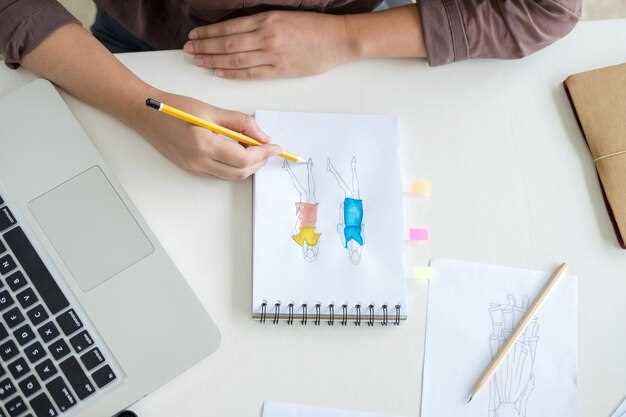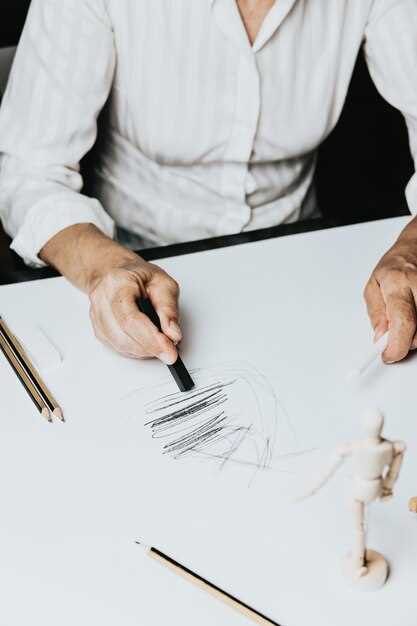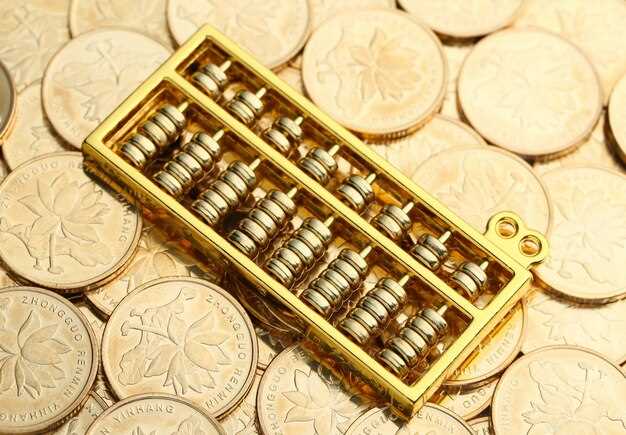Consider integrating Fairmined certification in your design process to ensure ethically sourced materials. By doing so, you champion responsible mining practices and contribute to sustainable development. This certification not only enriches your brand’s story but also builds trust with environmentally conscious consumers.
Familiarize yourself with the Fairmined standard, which guarantees the gold you utilize is mined by organizations committed to social and environmental well-being. Start by researching affiliated suppliers who provide Fairmined metals. This will enable you to trace the origin of your materials, ensuring they meet rigorous ethical standards.
Customize your design approach by collaborating with certified miners and suppliers. This collaboration allows for greater creativity while maintaining the integrity of your sourcing. By establishing clear communication channels, you ensure a smooth transition from concept to creation, minimizing any delays or quality concerns.
Promote the Fairmined certification within your marketing strategy to highlight your commitment to sustainability. Incorporate storytelling elements that resonate with your audience, illustrating how every piece is designed with both style and ethics in mind. Engage your clients with the values of transparency and responsibility, offering them a choice that aligns with their beliefs.
Continuous education in sustainable practices will keep you at the forefront of ethical design. Attend workshops and join forums that discuss the latest in Fairmined innovations. Stay informed about new developments to consistently improve and adapt your designs, ensuring they meet and exceed ethical standards.
Understanding the Fairmined Certification Process

Evaluate your sourcing practices to ensure alignment with Fairmined standards. Ensuring ethical gold sourcing involves several structured steps:
Research and Commitment: Begin by understanding the core principles of the Fairmined initiative. They focus on promoting environmentally responsible mining and equitable trade conditions. Familiarizing yourself with these principles helps in integrating them into your design process.
Selecting Certified Suppliers: Identify and establish connections with Fairmined certified suppliers. These suppliers have undergone rigorous assessments and follow strict mining practices. This choice ensures the materials you use uphold the certification’s authenticity and standards.
Documentation and Transparency: Maintain comprehensive records of all transactions with certified suppliers. Document every purchase and detail the supply chain to ensure traceability and transparency. This step builds trust and accountability with your clients and stakeholders.
Communication with Stakeholders: Effectively communicate your involvement in the Fairmined Certification to customers and partners. Highlight how your commitment to ethical sourcing contributes to sustainable development and social responsibility.
Continuous Learning and Improvement: Regularly update your knowledge on sustainable practices and include feedback from both suppliers and consumers. Remaining informed and adaptable ensures that you meet evolving standards and expectations.
Incorporating these steps into your design practice enhances the ethical value of your creations, demonstrating commitment not only to high-quality craftsmanship but also to significant social and environmental impact. By choosing Fairmined certified gold, you contribute to a more sustainable and equitable industry.
Key Requirements for Designers

Prioritize sourcing materials from Fairmined certified suppliers to ensure ethical practices and transparency in your designs. Identify reputable suppliers who adhere to Fairmined standards for social and environmental responsibility.
Integrate sustainable practices in your design process. Focus on reducing waste by optimizing material usage and incorporating recyclable or biodegradable materials. Educate yourself on the environmental impact of conventional materials and seek alternatives that support sustainability.
Develop a deep understanding of the Fairmined Standard. Familiarize yourself with compliance points related to labor rights, fair wages, and safe working conditions. Regularly update your knowledge to maintain alignment with the certification requirements.
Implement traceability measures in your supply chain. Maintain detailed documentation and records of your sourcing and production processes, which will aid in verification and auditing processes. Clear traceability helps build trust with consumers and stakeholders.
Participate in continuous education and training. Engage with workshops, webinars, and industry events focused on sustainable and ethical design practices. This will enhance your ability to adapt to new standards and expectations within the industry.
Collaborate with other designers and industry professionals who share a commitment to fair mining practices. Networking can lead to shared resources, insights, and potential partnerships that amplify the positive impact of your work.
Navigating Application Procedures
Begin by diligently reviewing Fairmined’s certification criteria available on their official website. Your first step should be creating a comprehensive outline of all necessary documents and any statements required to substantiate your commitment to sustainable practices. Clear documentation is key, so ensure clarity and precision when detailing your sourcing methods, production processes, and any partnerships with certified suppliers.
Next, establish a timeline to systematize the arrangement and submission of your materials. Accurate documentation and timely submission ensure a seamless application process. Prepare for a detailed review by Fairmined representatives, which might include requests for additional information or clarifications, so stay organized and accessible for communications.
Join relevant industry forums or groups for support and insights shared by designers who have undergone the process. Their firsthand experiences can provide essential guidance, potential pitfalls to avoid, and tips for enhancing your application. This networking step can be invaluable for ongoing improvements and staying aligned with certification standards.
Lastly, be proactive throughout the evaluation phase. Maintain open dialogue with Fairmined assessors and respond promptly to any inquiries. This approach not only reflects professionalism but also reinforces your dedication to the ethical practices defined by Fairmined certification.
Timeline and Milestones in Certification
Aim to conduct a comprehensive self-assessment of your current practices and materials, ensuring alignment with Fairmined standards. The initial stage usually spans a few weeks, focusing on evaluating your supply chain and identifying gaps.
Once the self-assessment is complete, bring together your team to draft a strategy plan aimed at addressing any discrepancies found during the initial evaluation. Allocate about a month for this phase, ensuring that solutions are realistic and actionable.
Next, engage an authorized certifier to perform an external audit. This vital step ensures all corrective actions are effectively implemented. The audit process may take up to three months, depending on the complexity of your operations and the certifier’s schedule.
After passing the audit, the Fairmined certification body will review the audit report. They typically make their final decision within one month, assuming all criteria are met satisfactorily. This is a key milestone as it marks the official recognition of your commitment to ethical mining practices.
Finally, celebrate this achievement by integrating the Fairmined certification into your brand identity and communications, reinforcing your commitment to responsible sourcing. Continue monitoring and refining your practices to adhere to Fairmined standards, preparing for the annual renewal process that maintains your certification status. Dedicate time each year to undergoing brief internal reviews, ensuring continuous compliance and improvement.
Common Pitfalls and How to Avoid Them
Ensure accurate traceability of materials from the very beginning. Implement a solid tracking system to meticulously document the journey of the raw materials from the mines to your workshop. Misplacing or losing traceability documentation can lead to delays or even loss of certification status.
Don’t overlook the importance of continuous education and training for your team. Regularly update your staff on Fairmined standards and practices to maintain compliance and ensure everyone understands their role in producing certified materials. Ignorance can often lead to mistakes that could easily be avoided with proper knowledge.
Miscommunication with suppliers is another potential pitfall. Establish and maintain clear lines of communication to ensure that all parties are fully aware of Fairmined standards and requirements. Regular meetings, updates, and shared documentation can help prevent misunderstandings.
Ensure that you prioritize transparency in your marketing and sales. Clearly communicate your Fairmined certification to consumers, detailing the ethical sourcing and sustainable practices involved. Misrepresentation can severely damage your brand’s reputation and trustworthiness.
Avoid rushing the audit process. Give yourself ample time to prepare for Fairmined audits, ensuring all necessary documentation and compliance measures are in place. Skipping thorough preparation can lead to certification refusal or revocation.
| Pitfall | Solution |
|---|---|
| Lost traceability | Implement a robust tracking system |
| Knowledge gaps | Invest in regular training and updates |
| Supplier miscommunication | Establish clear and consistent communication channels |
| Marketing misrepresentation | Be transparent in all brand messaging |
| Unprepared audits | Allocate sufficient time for preparation |
Integrating Fairmined Certification into Your Design Practice

Start by thoroughly understanding the principles and requirements of Fairmined Certification. Educate yourself on the use of responsibly sourced materials and the positive impact this has on mining communities. Familiarize yourself with the Fairmined standard, which mandates transparent and fair practices, ensuring your designs contribute to sustainable development.
Next, audit your current design materials. Identify elements that can be replaced with Fairmined gold or materials. Collaborate with suppliers who adhere to Fairmined principles. This might involve seeking new partnerships or re-negotiating terms with existing ones to ensure they provide certified materials.
Incorporate the Fairmined label in your branding and marketing efforts. Highlight the ethical aspect of your materials to appeal to conscious consumers. This not only adds value to your designs but also distinguishes your brand in a competitive market by demonstrating commitment to sustainability.
Train your team on the values and processes related to Fairmined Certification. Ensure they understand the importance of maintaining these standards in all aspects of design and production. Provide resources and workshops that encourage ongoing learning about sustainable practices.
Engage with your audience by sharing stories about the positive impact of using Fairmined certified materials. Utilize social media, blog posts, and your website to educate your customers about the benefits of supporting ethical mining. This transparency builds trust and aligns your brand with responsible design practices.
Selecting Fairmined Materials for Your Creations
Explore local suppliers partnering with Fairmined-certified mines. Support your design process with ethically sourced materials by choosing suppliers that provide transparency in their sourcing practices. Verify the certification status by checking their documentation and Fairmined labels.
- Examine the origins of precious metals like gold and silver, ensuring they are Fairmined certified, promoting responsible mining and community development.
- Compare prices and the availability of materials, considering how certification impacts these factors.
- Create a direct contact list of Fairmined suppliers to streamline future purchasing decisions, ensuring a reliable supply chain for continuous creative projects.
- Consider the environmental and social benefits each supplier implements, such as minimizing ecological impact or contributing to local educational initiatives.
- Incorporate gemstones from ethical sources, assessing their traceability and the supplier’s commitment to fair labor practices and environmental sustainability.
- Assess the physical properties of Fairmined materials to match your design needs, taking into account the material’s technical qualities and how they align with your creative vision.
Celebrate your selection of Fairmined materials by sharing their story with your audience, highlighting the positive impact of ethical sourcing on the communities and environment. Educate clients on the significance of their purchase, bridging the gap between ethical mining practices and finished products.
Building Partnerships with Certified Suppliers
Identify certified suppliers dedicated to sustainable and ethical sourcing by accessing the Fairmined database, which offers a list of verified partners committed to responsible mining practices. Once identified, establish direct communication to understand their capabilities and offerings fully.
- Ensure alignment on core values by discussing your brand’s sustainability goals and how the supplier’s practices contribute to these objectives.
- Request samples and detailed documentation of their Fairmined certification to assess the quality and authenticity of their materials.
- Discuss the long-term partnership potential by outlining expectations clearly regarding supply timelines, pricing, and quality standards.
- Involve your design team early in discussions to explore creative possibilities with Fairmined materials, ensuring innovative integration into future projects.
- Establish regular communication channels to address concerns swiftly and to share feedback, fostering a transparent relationship.
- Arrange periodic site visits or virtual tours if possible to gain firsthand insights into the supplier’s operations and compliance with Fairmined standards.
Leverage your partnership by collaborating on joint promotional campaigns highlighting the positive impact of your sustainably sourced designs, boosting both brands’ visibility and demonstrating a commitment to ethical principles to your consumers.
Communicating Certification to Consumers
Clearly display your Fairmined Certification prominently on your website and product pages. Use clear and engaging language to explain what the certification means and why it matters.
Incorporate storytelling into your marketing materials to create an emotional connection. Share stories about the origins of the materials you use and the miners who sourced them. This adds a human element that resonates with consumers.
Leverage social media platforms to highlight your certification. Create posts that educate your audience about the benefits of Fairmined gold and its positive impact on mining communities. Use hashtags like #Fairmined and #ResponsibleGold to increase visibility.
Provide informative content through blogs or newsletters. Offer insights into how choosing Fairmined certified products contributes to sustainable practices and ethical sourcing. This positions your brand as a responsible and transparent choice.
Train your sales team to accurately convey the importance of Fairmined Certification in-store. Equip them with responses to common questions, ensuring they can articulate the added value to consumers effectively.
Collaborate with influencers and industry experts who align with ethical sourcing values. Their endorsement can broaden your reach and lend credibility to your certification efforts.
Utilize certification logos on physical product tags and packaging. This serves as a quick visual cue for consumers seeking ethically sourced products, enhancing their shopping experience.
Adapting Design Processes for Certified Material Use
Recognize the unique properties of Fairmined gold and silver when selecting materials for your projects. Evaluating the ethical and environmental impact of these materials helps align your brand with sustainable practices.
Modify your sourcing strategy by establishing relationships with certified suppliers. Ensure these partners provide documentation verifying the origins and certification of their materials, guaranteeing compliance with Fairmined standards.
Integrate traceability into your design process to maintain transparency. Develop a system that tracks material usage from supplier to final product, sharing this journey with customers to build trust and add value to your creations.
Revise your design criteria to incorporate Fairmined materials at the conceptual stage. This approach can influence everything from the choice of sketches to production techniques, ensuring that sustainable practices are embedded in every step.
Explore design innovations that minimize waste during production. Consider techniques such as digital prototyping and upcycling, which complement the ethical values of using certified materials.
Train your team to understand the significance of using Fairmined materials. Foster a culture of sustainability by sharing knowledge on ethical sourcing and the benefits it brings to communities involved in the extraction process.
| Step | Actions |
|---|---|
| Material Selection | Assess material properties, ethical impact |
| Sourcing Strategy | Partner with certified suppliers, verify documentation |
| Traceability | Implement tracking systems, share material journey |
| Design Criteria | Incorporate certified materials at initial stages |
| Waste Minimization | Use waste-reducing techniques, such as prototyping |
| Team Training | Educate team on sustainable practices, ethical benefits |
Q&A:

What are the initial steps required for a designer to achieve a Fairmined certification?
The first step for a designer seeking Fairmined certification is to familiarize themselves with the standards and requirements outlined by the Fairmined initiative. This includes understanding the sustainable and ethical mining practices that Fairmined supports. Next, designers should reach out to licensed Fairmined suppliers to source their materials. They will then need to apply officially for certification and undergo an assessment to ensure all production practices align with Fairmined guidelines.
How does Fairmined certification impact the sourcing of materials for designers?
Fairmined certification significantly influences how designers source their materials by ensuring these materials come from responsibly managed and environmentally friendly mining operations. It gives designers access to traceable gold that supports mining communities through fair wages and safe work conditions. This transparency in the supply chain encourages ethical practices, enhancing the designer’s reputation and aligning with global sustainability goals.
Can small-scale designers afford the process of Fairmined certification?
While there can be costs associated with becoming Fairmined certified, including fees for assessment and compliance, the investment can be manageable for small-scale designers. Resources and support are available through the Fairmined network to help designers of all sizes. Moreover, many find that the ethical value and marketing advantages, such as appealing to eco-conscious consumers, provide a positive return on investment.
Why should designers opt for Fairmined certification instead of other ethical certifications?
Fairmined certification is distinctively focused on ethical and sustainable practices within the realm of artisanal and small-scale mining. It not only guarantees responsible supply chain practices but also empowers mining communities by offering premiums that support local development projects. Designers choosing Fairmined products play a direct role in improving miners’ livelihoods and promoting environmental stewardship.
What challenges might designers face during the Fairmined certification process?
Designers might encounter challenges such as navigating the compliance requirements, which demand time and understanding of the Fairmined standards. Access to certified suppliers can also be limited geographically, requiring careful planning and logistics. Nevertheless, these challenges are often outweighed by the benefits of using ethically sourced materials, which can set a designer apart in a competitive market.
What are the main steps a designer needs to take to obtain Fairmined Certification?
To obtain Fairmined Certification, a designer must follow a structured process. First, the designer should familiarize themselves with the principles and standards of Fairmined Certification, which promote responsible mining practices. Next, the designer needs to source materials from suppliers who participate in the Fairmined initiative. Once the materials are acquired, the designer should ensure that their entire supply chain complies with Fairmined standards, which involves documenting the origin of materials and ensuring ethical production practices. Afterward, the designer can apply for certification through an approved Fairmined certifier by submitting the necessary documentation and undergoing an audit. Lastly, it’s important for designers to maintain ongoing compliance and be prepared for periodic reviews to retain their certification. This process not only supports ethical practices but also enhances the designer’s credibility and brand value.



